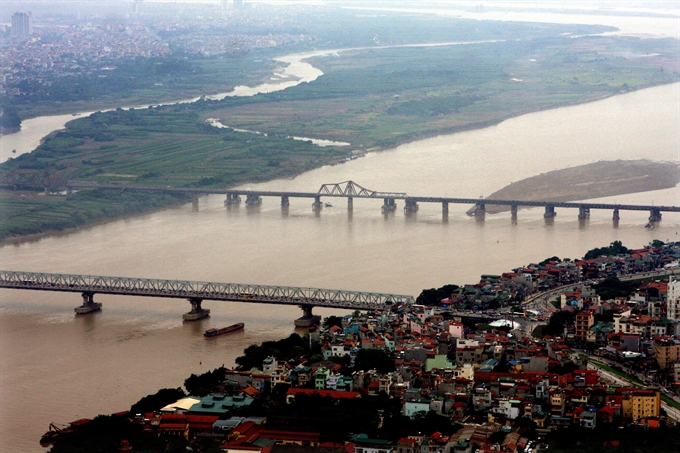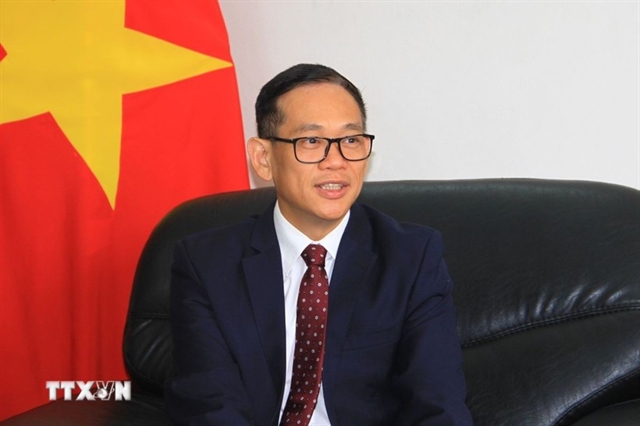 Society
Society

The Ministry of Planning and Investment (MoPI) has officially submitted to the Government a draft blueprint for the highly controversial transportation and hydroelectric project on the iconic Hồng (Red) River of Hà Nội for further consideration, stressing that it was still “merely only an idea.”
 |
| The Long Biên and Chương Dương bridges cross the Hồng (Red) River in Hà Nội. The Ministry of Planning and Investment (MPI) has submitted to the Government a blueprint for the highly controversial transportation and hydroelectric project on the iconic Hồng River for further consideration. VNA/VNS Photo Trọng Đức |
HÀ NỘI – The Ministry of Planning and Investment (MPI) has officially submitted to the Government a draft blueprint for the highly controversial transportation and hydroelectric project on the iconic Hồng (Red) River of Hà Nội for further consideration, stressing that it was still “merely only an idea.”
The US$1.1 billion trans-Asia transportation and hydroelectric project – some call it a mega-project – aims to create a 288km long transportation corridor along the Hồng River stretching from the Chinese border in Lào Cai right down through Yên Bái, Phú Thọ, Hà Nội and Hải Phòng, all the way to Nam Định Province.
The Ninh Bình Province-based company Xuân Thiện Co Ltd, established in 2012 as a subsidiary of the Thai Group, proposed to build at least three and a maximum of six hydroelectric plants on the river to raise the water level for large vessel operations. Those power plants were expected to provide 912 million kWs a year once finished.
The investor also planned another seven ports in Lào Cai, Yên Bái, Phú Thọ and Hà Nội, hoping to promote the economy of the northern regions with each directly-affected locality having a 5 per cent increase in GDP, according to the investor.
Environmental impacts
Though most of the ministries gave the six-year-long mega-project a green light, the MPI was still cautious about whether the Government would give the nod to such a massive project given its impact on the environment, which has triggered protests from experts and residents.
“We realise that the project would surely affect the environment when it comes to river dredging or building power plants,” said MPI’s Investment Monitoring and Evaluation Department Head, Nguyễn Xuân Tự, in a regular Government press briefing on Thursday evening.
He said that the project would affect the Hồng River Delta – the second largest rice producing region in Việt Nam – to “a certain degree”. A thorough assessment of the hydrography, irrigation and possible riverbank erosion as well as silt build-up would be carried out by relevant agencies and reported to the Government, said Tự.
The Việt Nam Energy and Electricity Association (VEEA) Deputy Chairman, Trần Đình Long, told the online newspaper Vnexpress that while those six small hydroelectric plants would not contribute much to the country’s power needs, their building would probably lead to the further salinisation in the delta provinces.
“Dredging will make the riverbeds lower and let seawater intrude,” he said.
Financial queries
In its project proposal, the Xuân Thiện Company said it planned on a 25-year payback, or an annual net profit of VNĐ1.29 trillion ($57.3 million).
The Ministry of Finance slammed the company’s plan, saying there would be no chance of the project reaching its payback deadline unless it was granted special privileges by the Government. Those privileges, which the company asked for in its proposal, included higher electricity prices and river way fees, tax-exemptions regarding land and water use, forestry and environmental services, and corporate income.
Xuân Thiện asked to be allowed to sell electricity at VNĐ1,900 (8 cents) per unit for the first five years of operation, which is already higher than the current average rate of about VNĐ1,622 (7 cents). The price would increase to VNĐ2,380 (10 cents) per unit in the next five years, and nearly double to VNĐ3,560 (15 cents) in the following years.
The Government subsidising the investor if these price proposals were not approved were not part of the national electricity development plan, according to the MPI.
Meanwhile, an open market for power plants to sell electricity is due to begin in 2017, while another one for retail power will officially start in 2021. Residents will be able to buy power from cheaper providers, and Xuân Thiện’s power plants might fail to find customers in such a competitive market. – VNS




